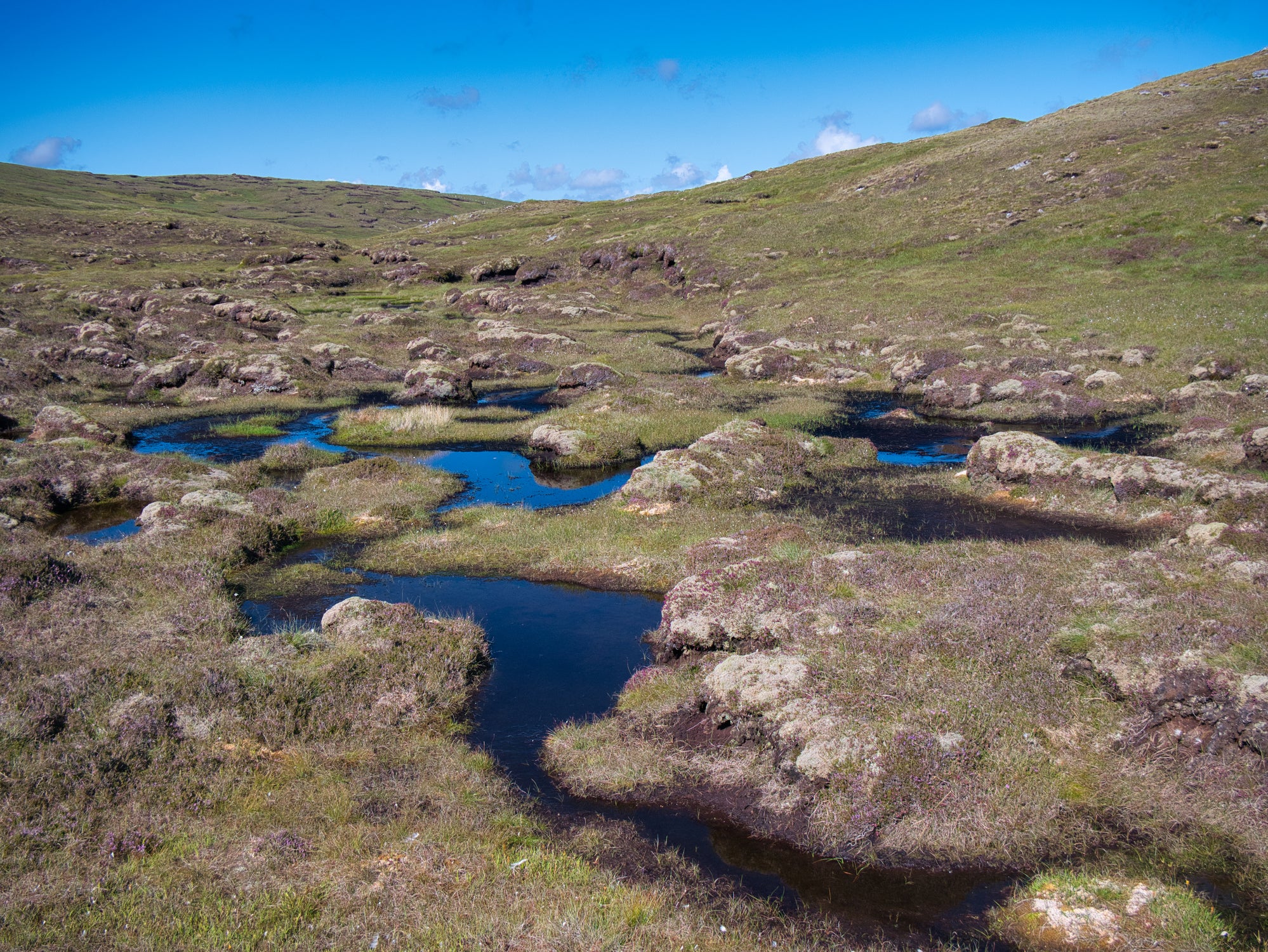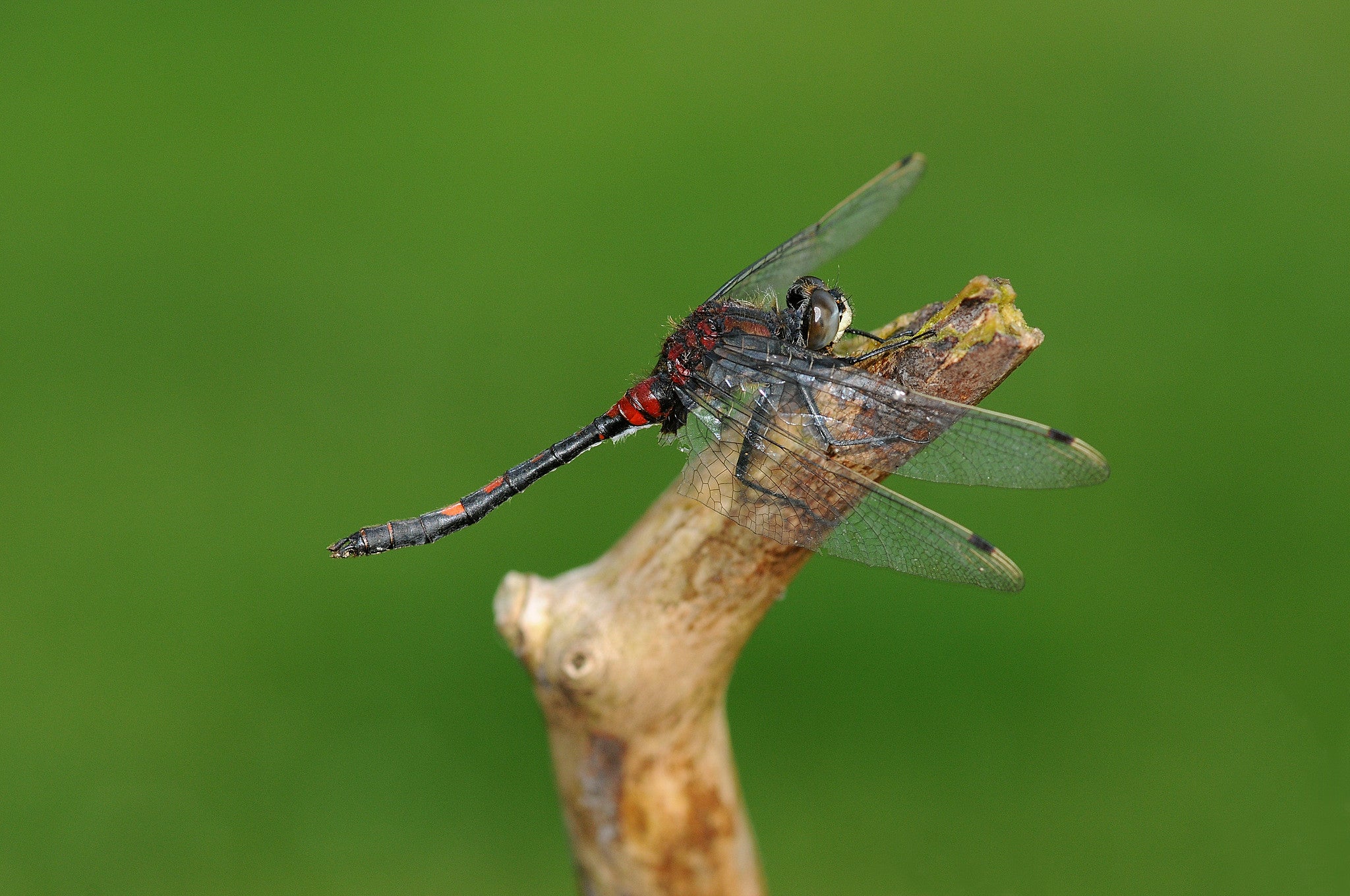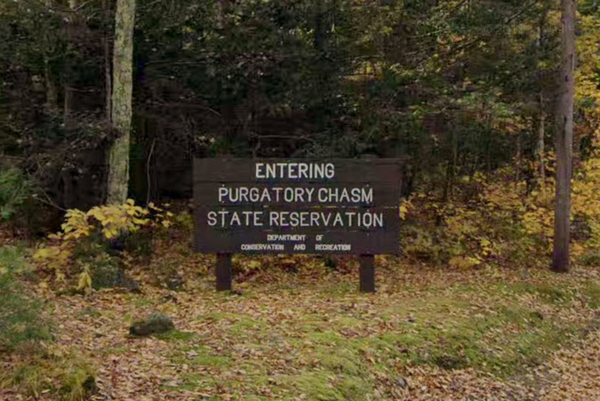
Once prevalent in peat bogs across Britain, the distinctive white-faced darter dragonfly’s known population in England had until recently been diminished to just five isolated patches of surviving habitat.
But despite the existential threats of both climate change and the degradation of Britain’s peatlands, new populations of the insect species are now thriving thanks to major efforts to reintroduce them to habitats both old and new.
One such effort is underway in Cumbria, as a team of conservationists transported buckets of sphagnum moss containing dragonfly larvae to a new site at RSPB Campfield Marsh, a nature reserve on the shores of the Solway Firth.
The relocation follows years of efforts by conservationists to create the exact balance of habitat conditions at Campfield Marsh in which white-faced darters – which breed in lowland acidic pools containing sphagnum moss – can hopefully thrive.
Following Tuesday’s operation, a further reintroduction of larvae and eggs is due to take place in August, and are expected to continue for up to five years to ensure a stable population is established.
It is hoped that visitors to Campfield Marsh may be able to spot the white-faced darter as early as May 2026.
“This is an exciting opportunity to boost biodiversity in this beautiful and hidden corner of Cumbria, helping to create a new population of this charming but endangered species,” said Mhairi Maclauchlan, RSPB Cumbria’s coastal reserves manager.
“It’s incredibly rewarding to know we have created the right conditions for white-faced darter, and we’re delighted to carry on the legacy and successes of the other projects in Cumbria.”

While white-faced darter are still prevalent in the Scottish Highlands, they are classified as endangered on the British Odonata Red List.
Eleanor Colver, the British Dragonfly Society’s conservation officer, told The Independent: “The main cause of the species’ historic decline in England has been habitat loss and degradation as a result of the drainage of their peatland sites to make the land suitable for agriculture and forestry.”
The last-known healthy breeding population in Cumbria was found on a private site of special scientific interest near Carlisle, which was previously chosen as a donor site from which larvae could be used to reintroduce new populations at two Wildlife Trust sites – Foulshaw Moss, from 2010 to 2015, and Drumburgh Moss, from 2019 to 2024.
Both populations are now said to be thriving, and the same donor population is now being used at Campfield Marsh.

Ms Colver said: “One of the main threats to the species now is climate change; rising annual temperatures and more frequent extreme weather events can alter the water levels and vegetation structure of peatbogs, making them unsuitable for white-faced darter.
“For example, the species is associated with bog moss Sphagnum cuspidatum, which it lays its eggs in, and is where larvae live within breeding pools; the bog moss can not survive desiccation during drought conditions.”
Both Campfield Marsh and Drumburgh Moss, which is also located on the Solway coast, were selected as introduction sites because the area has a cooler and wetter climate than at some of the species historic breeding sites, such as Thursley Common in Surrey, where the species has gone extinct, said Ms Colver.
“Campfield Marshes contains a healthy peatbog, with numerous pools which, it is hoped, will provide suitable breeding conditions for their new White-faced Darter residences for many years to come,” she added.
Earth Day marks the chance to help save the planet. The environment is on the edge
Wildfires grow to hundreds of acres after North Carolina lifts burn ban
WH working to end habitat protections for endangered animals, environmentalists say
Farmers warn all cocoa trees could be ‘destroyed’ by 2030. Here’s why
More than 80% of world’s coral reefs hit by worst bleaching event in history
Chinese company announces another huge advance in EV battery technology







